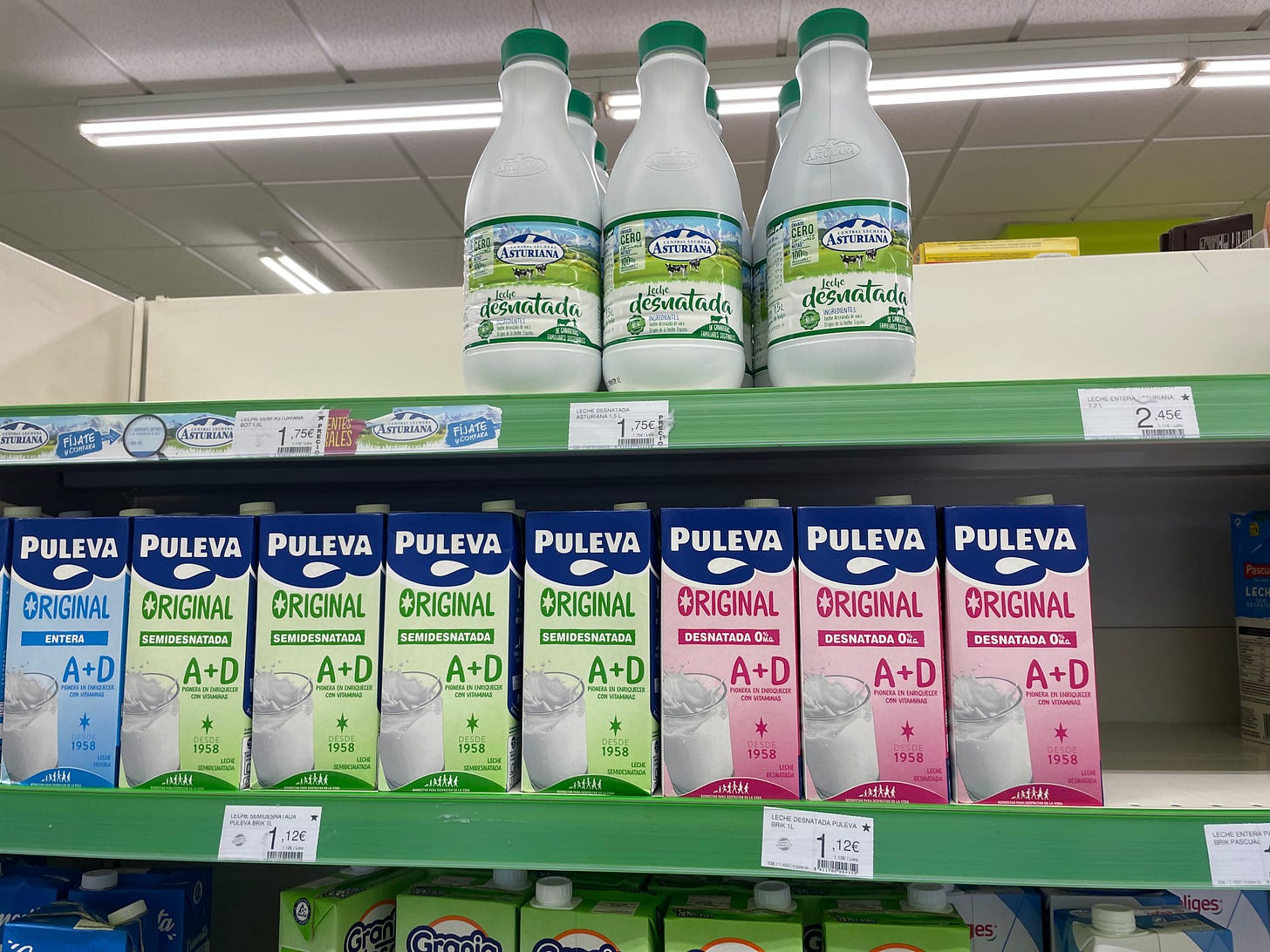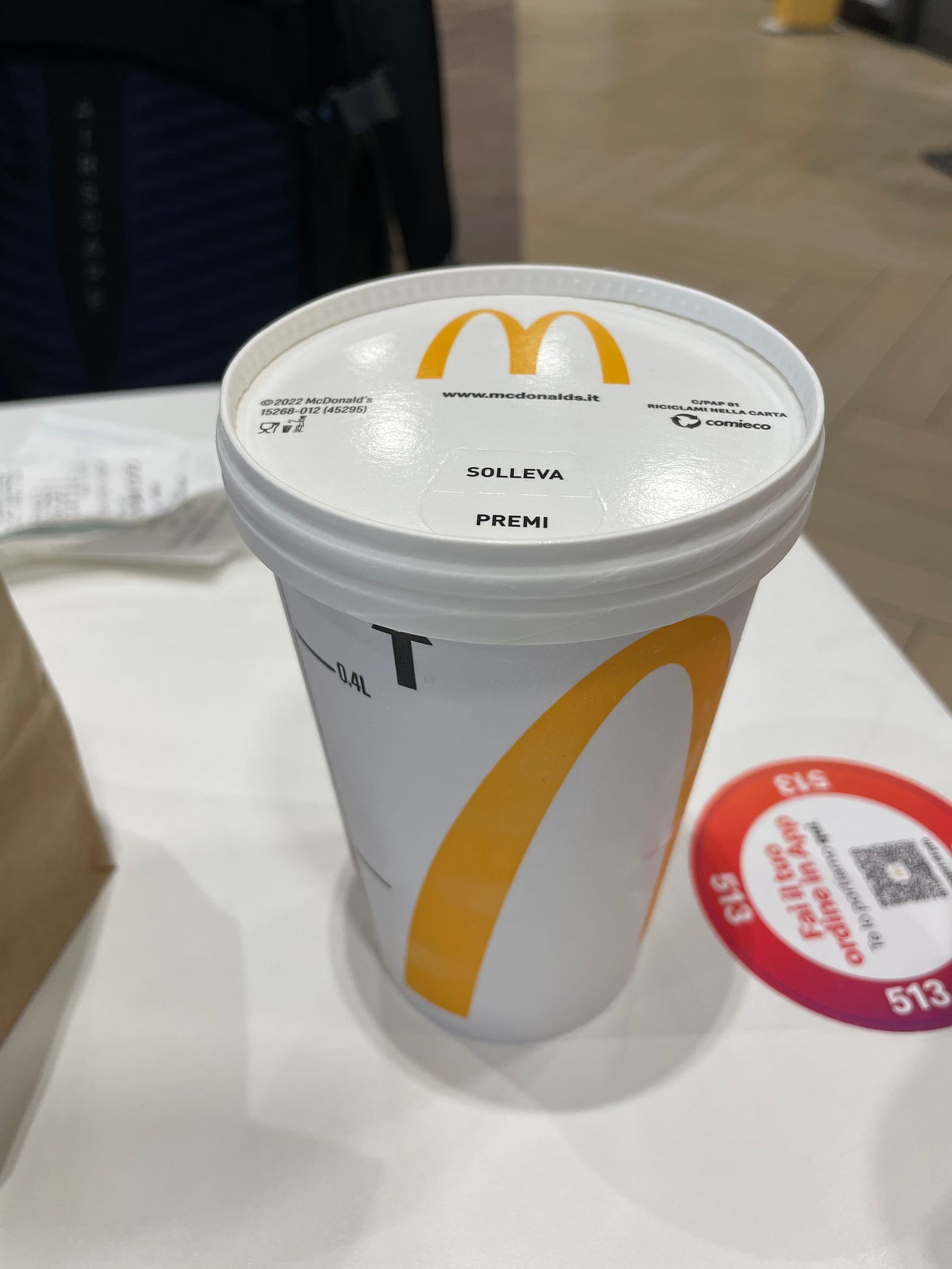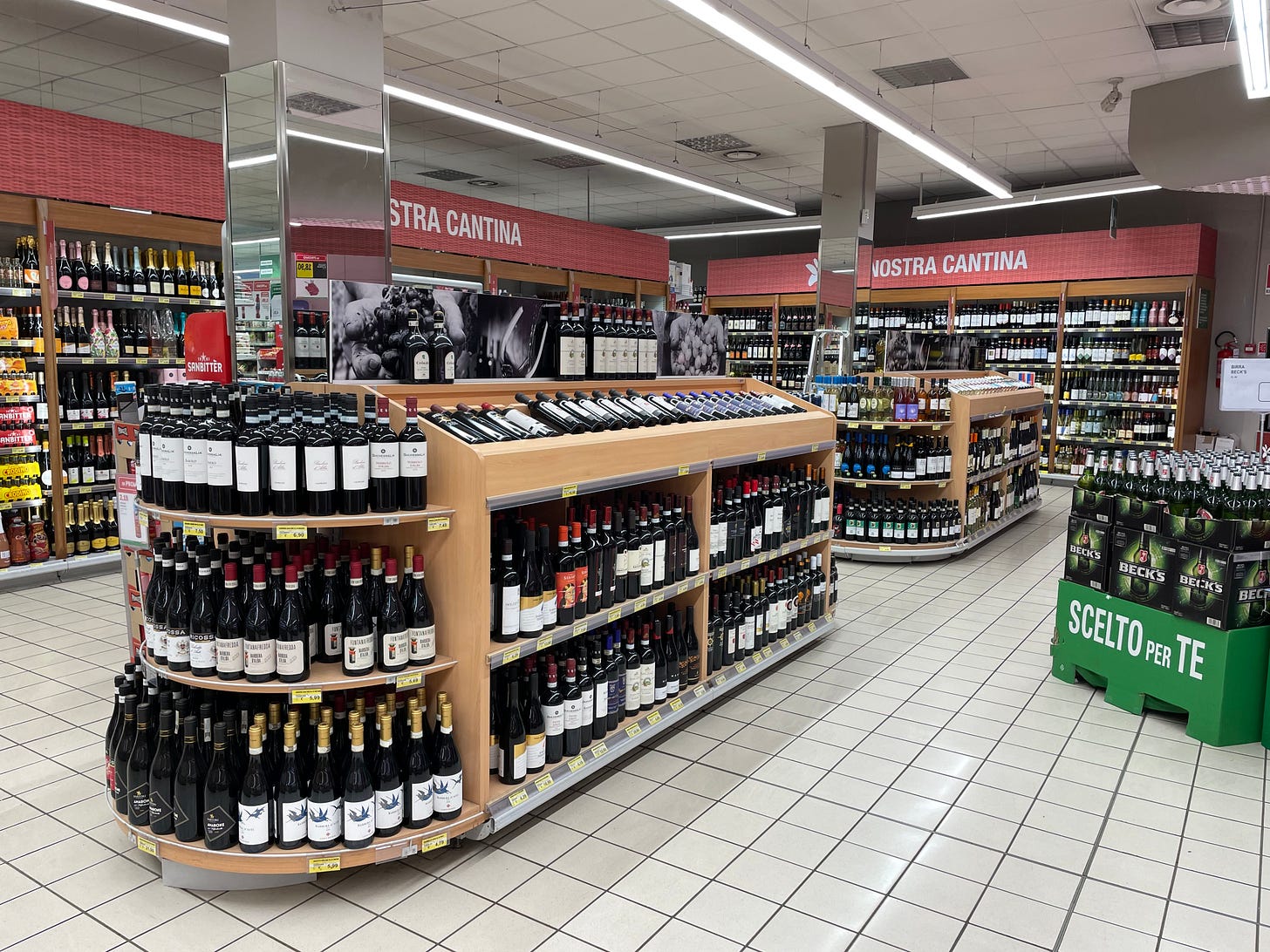Have you ever wondered what it’s like to enter a parallel universe?
Going to Europe might be the closest possible experience. You enter a world with people and buildings and food, but everything is slightly different.
From April to June this year, I travelled solo to Europe for 82 days and talked to over 500 Europeans. What follows are some fascinating observations I made.
I visited Portgual, Spain, The Czech Republic and Italy. This small sample of countries may not represent all of Europe. As I like to remind myself from biology, there is always an exception.
This is a “build your own adventure” type of article. Feel free to jump around to any topics that look interesting. I’ve grouped my findings into two larger categories: food and city Life.
Next week, we’ll dive into family life, school, and the economy in Europe.
🍕Food
Cafes, Tips, and Trust
One of the first things that shocked me about Europe was that it was hard to find indoor seating at a cafe. In Spain, Italy and many parts of Europe, a cafe is synonymous with a bar. Most places that sell coffee and pastries also sell alcohol for later in the day (or morning).
My first week in Sevilla, I was struck by how everything was outside. I actually struggled to find a place inside to eat. It’s not like it was super hot either. I just had a tendency to be inside more often than not.
But here’s the thing: unlike the US, waiters don’t pay you any special attention. Whether this had to do with the no-tip structure or not, I didn’t know anything coming in.
So when I went to my first cafe, I just watched other people. It seemed like they just sat down at an open table and someone came to give them a menu. Then to order something, you had to get their attention: asking for drinks, food, and even the bill.
Something I enjoyed was that they never rushed me out. Once I was ready to leave, I requested the bill, and that’s it. Now whether you’re sitting inside or out, I’m used to going up to the counter, ordering a drink, then sitting down. Still confused, I asked a local barista what the hell was going on. What’s the right way to order and sit down in a cafe or restaurant?
Sometimes there’s someone to seat you, especially at nicer restaurants. She told me that when you come in, you can sit wherever you want. To order, you just get the waiter’s attention. They let you mind your own business, and when you’re ready you can pay.
But here’s what shocked me the most: she told me that they have this deeper trust with each other (“confianza”). Trust that you’ll pay your bill before you leave. Europeans not only trust each other more, but they’re also less judgmental. “Stranger danger” is surely an American term, as a Chilean guy once told me.
No Fridge: Milk, Eggs, and Juice
I remember going into a supermarket in Sevilla, looking to buy eggs. I searched the refrigerated sections, but couldn’t find anything. Until I found them right next to the hanging pig legs.
I noticed a similar thing with milk and juice. Most of it was on the shelves. There were no gallon-jugs for milk. It was usually some larger rectangular box-shaped cartons. After a quick Google search, I learned that milk has a different pasteurization process overseas, so it didn’t need to be stored in the fridge.
Nearly all alcohol, soda, and other beverages were unrefrigerated. I saw a few mini fridges, but most stuff wasn’t refrigerated because they didn’t need to be. There sometimes were mini-fridges with a few cold Coke Zeros and beers.
Food Portions are Much Smaller
If you want to lose weight, come to Europe.
As you’re probably heard, food portions are smaller. It feels weird coming from America, but the thing is, people are accustomed to it there. My Croatian friend who lived in the US couldn’t get over how big portion sizes were, especially the drinks in movie theaters. “Buckets,” he called them. A European “large” is smaller than an American “small” in a movie theater.
In a McDonald’s in Italy, my “medium” drink felt tiny. Also, there was no machine for free refills. The machine was in the back.
Free refills don't exist in Europe, even in the all-you-can-eat buffet that I discovered in Madrid. I’m always curious why they’re a thing in the first place. Do you know how many people would be thinner if there weren’t free refills everywhere?
🌆 City Life
Barely Spoke English
I’ve always heard that English is the “universal language.” So I was floored when I found out that people in Spain and Italy barely spoke it. My guess is that it’s not practical. I talked to many Europeans: even if they’re young and learn English in school, they won’t really use it. This was a great chance to learn “real” Spanish.
It’s not that practical. Just like us in America learning French in high school. Now of course learning English might open up new career opportunities for many of them, but I’m always grateful that I know English.
Loose Dogs
I noticed this everywhere: people let their dogs roam without a leash. Even in the city, too. And they’d carry a big bottle of soap water to rinse off any pee on the building. The loose dogs serve as an appropriate metaphor for Europe: they just don’t care as much about certain things. People are less stressed and worried about everything. I wonder if that explains their longer lifespan.1
No Driver’s Licenses??
In the US, when you turn sixteen, you get a driver’s license and a car so you can get around on your own. Yet in Europe, I met countless people in their twenties who didn’t even have a driver’s license.
Why?
Well, they don’t really need it. You see, public transport is excellent in Europe. Europe is smaller than the US, so they use trains to travel between cities and bus, metro, and tram to travel in the city. Not only is it reliable, but it’s cheap too. Imagine if you never have any of those car fees and maintenance costs.
It’s not just that they don’t need it. Some of it may be for environmental or economic reasons. I learned that the government also makes it difficult in some places: in France, a license costs 1500 Euros, and in the Netherlands there’s a painfully long process to get one.
For three months, I lived without a car. I tried out public transport for the first time. Although I missed a few busses and got lost, I had a great time. Imagine a world without a car. Many people live that reality. As I revise this in September from my house in the suburbs, I miss living in a walkable city. There’s no doubt that quality of life is higher when you can walk to your favorite restaurant, cafe, or grocery store.
Europe is Really Safe
In my mind, I always viewed public transport as sketchy. Pickpocketing, robbery, you name it. But I was so surprised with how safe the streets and public transport were in Europe. Same with hostels: they were run like a business—safe, professional, and clean.
Although you’ll hear pickpocket warnings on the metro, I never saw it happen. Here’s a few practical things to do whenever you’re out in public:
Don’t carry anything in your back pockets.
If you have a backpack, wear it on the front of you. Better to wear a small fanny pack to put all your belongings in.
If you’re moving through crowds of people, keep your hands in your pockets if you have any valuables in there. I keep my phone in my left pocket, so whenever theres tons of people, I just keep my hand in pockets. Also, wearing shorts or pants with zip up pockets works great (shoutout Kühl shorts).
With that said, Europe is incredibly safe. From other Americans I’ve talked to, they can confirm this. Even some American girls told me that while in the US they don’t feel safe walking solo at night, in Europe it’s the reverse.
Environmental Focus
One afternoon in the kitchen of a hostel, I heard someone say they chose to take a train over a plane for environmental reasons. This shocked me, seeing that long-distance travel on trains is more expensive. They’re environmental in Europe.
It’s common to find three trash bins: compost, recycling, and trash. I also learned that they European students have environmental classes in school.
Whatever your worldview is, it’s wise to follow the principle of not wasting. So when I came back and saw all the beer in King Soopers refrigerated, I realized what a waste that actually was.
Smoking
You always hear about smoking in Europe, but you have to smell it to believe it. People smoke everywhere. Teenagers, cute girls in their early twenties, you name it. As an experiment, I downloaded Tinder. Nearly 50% of girls smoked. There’s a tobacco store on every corner. I’d never seen hand-rolled tobacco either, but most of the friends I made were rolling it every day (they were my age, too).
There are No Liquor Stores
I remember eating my first breakfast in Spain at a cafe. It’s 11:30 am, and the ladies behind me ordered beers. I had to do a double take to make sure those green Heiniken’s were real. I then met countless bartenders who had a beer on the job. “Day drinking” isn’t frowned upon here; it’s normal. I once refused a drink from a couple of German guys in the early afternoon. They almost took it as an insult.
For Europeans, alcohol is a less about getting hammered than the social experience with others (although they drink alright). A Dutch Au Pair girl I met in Boulder noticed that Americans are all or none when it comes to partying: sober or mad drunk. With more lax drinking rules, it seems like Europeans know that you don’t need to be drunk to have a good time, but also that getting a drink is less about alcohol and more about the social experience.
It felt weird going to my first bars and dance clubs (discotecas). At the time I was twenty and had never been to a bar before. Alcohol rules dramatically influence the culture. Europe almost has a more social culture. In America, getting a coffee is a default way to hang out with people; in Europe it might be grabbing a beer (or seven).
It’s strange to think that in the US, you can drive a car when you’re sixteen, buy a rifle when you’re eighteen, but not drink until you’re 21. Whenever I confirmed this for those curious Europeans, they had the most confused look on their faces.
Lastly, a “liquor store” isn’t really a thing. Most grocery stores are always loaded with wine, beer, and other alcohol. Of course, none of it was refrigerated.
Last thing: if you liked this, you’ll enjoy my daily short-form writing on Twitter. It’s where I share most of my ideas, stories, and thoughts.
In case you’re not aware, stress impairs your physical health. With high levels of cortisol (“stress hormone” is one role it plays), you’re more likely to gain weight and have sleep issues.
“Distress Tolerance” is one of Dr. Peter Attia’s levers to pulll for living a longer, better life. One statistic that always stuck with me from psychology: Type A personalities are 7 times as likely to die from heart disease than Type B. Lesson: meditate.











